Are you Planning a trip to Rajasthan? Well, wait are you ready to go to Rajasthan. A major part about visiting a place is to first know it's culture. It'll help you see and understand the place and it's people better. So, before you visit Rajasthan, read about the unique culture of Rajasthan, and know the place you are going.
Culture of Rajasthan
Rajasthan is one of the princely states of India. The culture of Rajasthan is artistic and traditional. Rajasthan was previously called Rajputana which means Kingdom of the Rajputs.
#1. History of Rajasthan
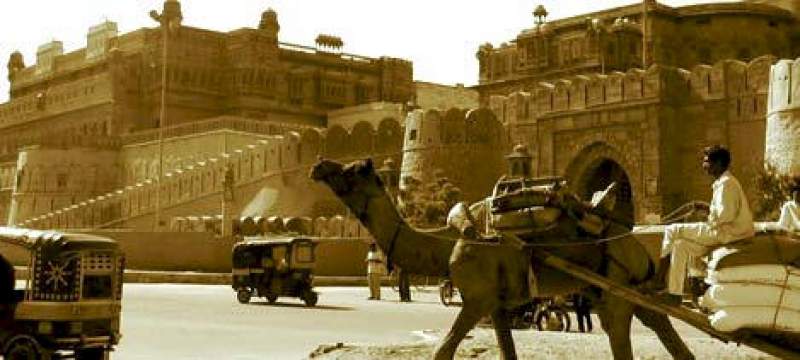
The ancient history of Rajasthan dates back to over 2 Lac years ago were stone age tools were found after excavation in Bundi and Bhilwara. The first civilazation is probably 5000 years ago in present day district of Sikar and Jhunjhunu. This was probably a part of Bramhawarta (an area where good people or goodness was born) - A vedic state near Mahendragarh and Rewari in Haryana.
Some experts also suggests that parts of Haryana was also occupied by the Indus Valley Civilization. The medieval history of Rajasthan is what has defined it as the land of Kingdoms. Starting from Prithvi Raj Chauhan in 1191 to Rana Sanga who defeated the Lodi Empire and had put up a stron battle against the Mughal Empire of Delhi this land has seen a lot of blood baths and fights of brave kings. The Mughal Ruler Akbar or the other hand, married the Rajput princess Jodha Bai - the princess of Amer - and formed strong alliances and trust with the Rajput rulers. But, still there were some people who fought against him and never ceded their independence under the Mughal sultanate. The Rajput rulers' bravery and valiance is talked about till today. Even when the rulers lost the entire women folk of the kingdom used to commit suicide by self-immolation on a burning pyre called as "Jauhar". Although this is a land of deserts, the rich culture and majestic opulence of the king bears witness to the numerous palaces and forts. This makes Rajasthan one of the best places to visit in India.
#2. The People of Rajasthan
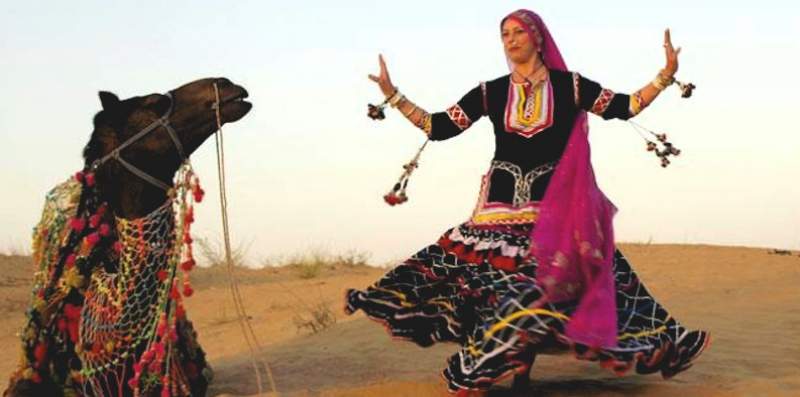
The natives of Rajasthan are said to be Rajasthani people. The Rajasthani people are said to be a part of the Indo-Aryan group. Some suggest that the Rajasthanis are the successors of the Indo-Scythians. Some people also suggest that the Romani people or the gypsies or Roma are basically Indo-Aryan people who left the North-western part of India, some 1500 years ago and settled in Europe and America. Especially central, southern and eastern Europe (southern France, Turkey, and Spain). These Romani people who fled away are called "Banjaras of India". The state of Alwar could be the oldest kingdom of Rajasthan.
#3. Religion of Rajasthan
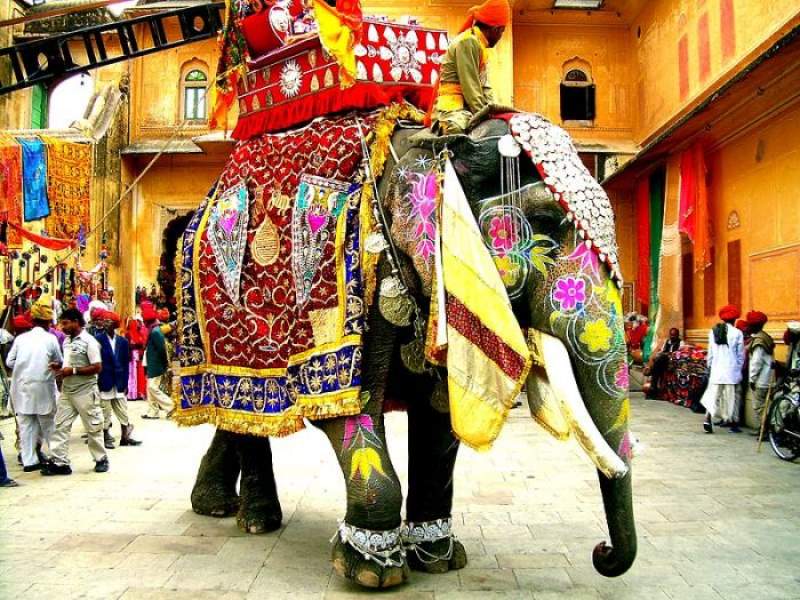
The Hindus formed the largest part of Rajasthan. Muslims, Sikhs, Sindhis and Jains formed the remaining minority population of the state.
#4. Language of Rajasthan
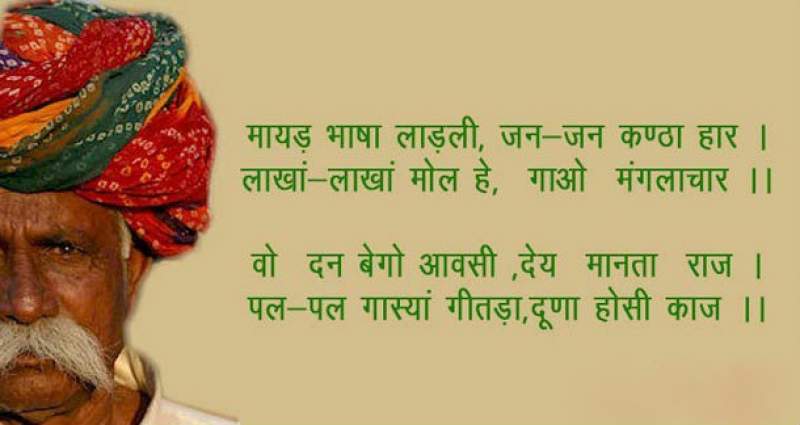
If you are traveling in Rajasthan, language is the most important part of the state. Although English and Hindi are the most widely spoken language in the state of Rajasthan. However, the most popular local Rajasthani language is 'Marwari'. Other languages spoken are 'Malvi', 'Mevati' and 'Dhundari'.
#5. Rajasthani Dress
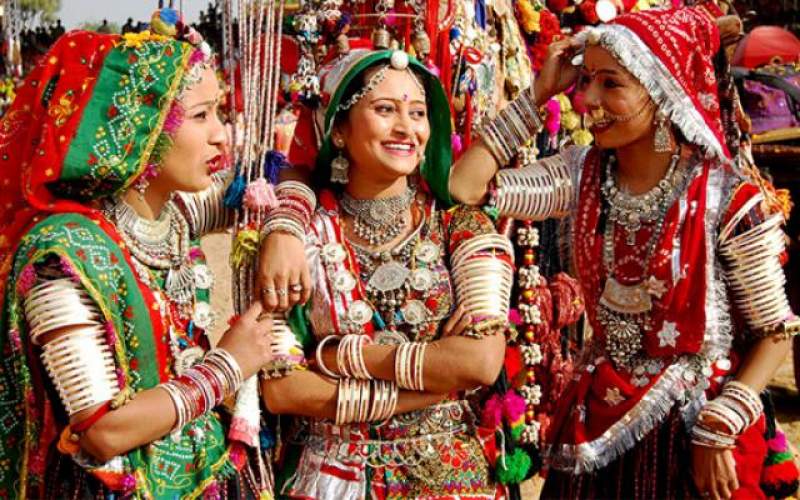
The men wear - 'Dhoti' and "Kurta' along with an 'Angarkha' and a 'Safa' (turban). The women wear, Ghagra along with 'Kanchli'. If you've traveled to Rajasthan, you'll find women covering their head with the end of the Saris and dupattas. Although, it basically started because the women followed the Purda system. However, today it is done as a sign of hospitality and respect. These colorful clothes of Rajasthani people make this a beautiful land of sun and frolic.
#6. Jewelry of Rajasthan
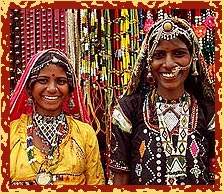
Jewelry is an important part in the Rajputi traditions. Ironically, along with the typical Rajasthani dress, you must have also noticed Rajasthani men wearing different types of Rajasthani jewelry. It is generally done to show-off their social stature. Rajputi men are generally seen wearing 'Kara' and 'Ear-rings'.
In Rajasthan, jewelry defines your wealth. While the wealthy people used to wear gold, diamond or emerald ornaments, the commoners wore silver ornaments. The 'Rabris of Sirohi' are popularly known for wearing heavy silver jewelry.
#7. Camels in Rajasthan
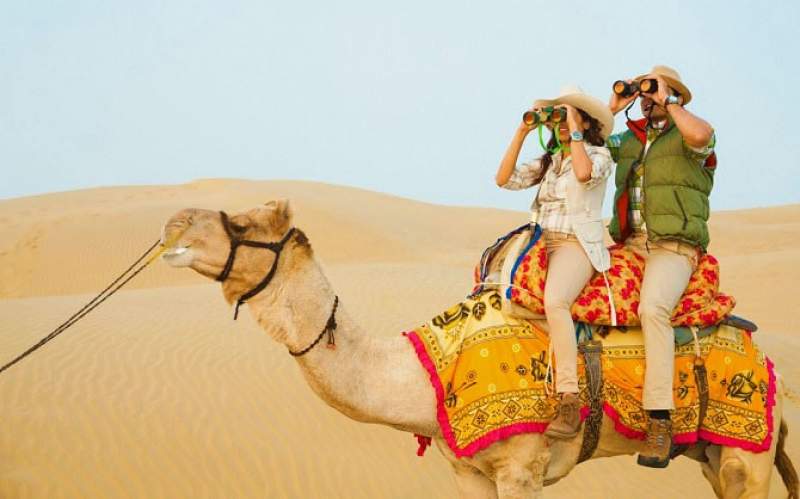
The ship of the desert, camels are most commonly found only in Rajasthan in India. In the Thar desert of Rajasthan, people generally dwell on these camels as a life savior animal. Camel's milk is used for making tea, sweets and other milk products like cheese, butter, etc. Especially in Bikaner - in January, Jaisalmer - in february and Pushkar - in October, camel fairs are held every year.
#8. Traditions of Rajasthan
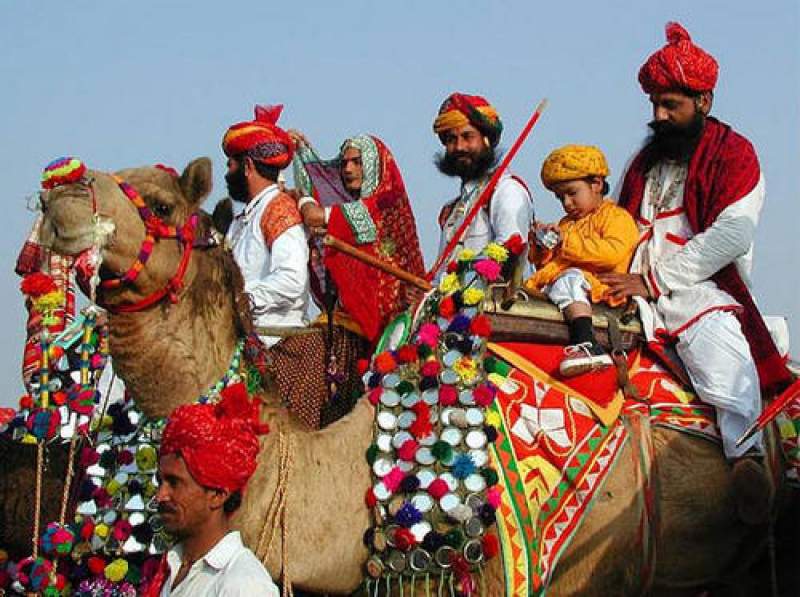
It's quite amazing that the tradition and culture of Rajasthan is still the same as the Vedic age. Every festival and ocassion are celebrated as per the rules and regulations mentioned in the Vedas. The 'Folk Tradition' of Rajasthan are reflected in the 'Folk dances' which are performed during Rajasthan festivals. The 'Rajasthan International Folk Festival' celebrated in Jodhpur's Mahendragarh fort is hugely popular.
#9. Music of Rajasthan
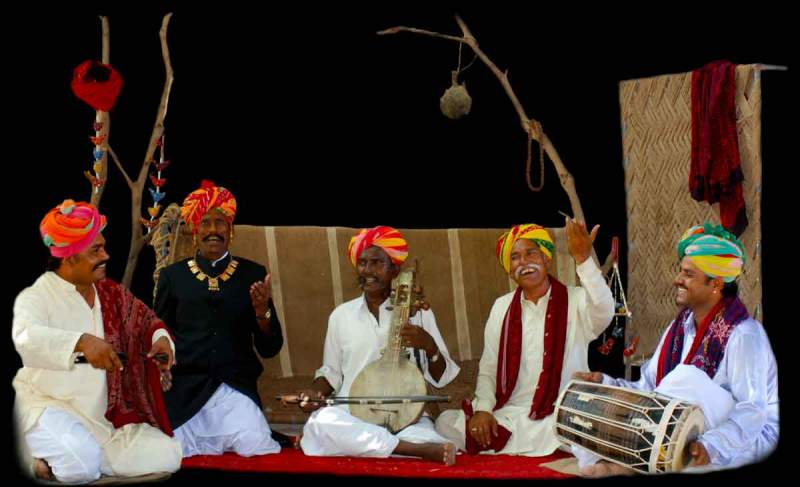
Rajasthani music is inspired from the land and its folk-lores. It also has a typical Sindhi influence. Did you know that the musicians are also divided in classes in Rajasthan while the 'Langas' sing for the Muslim audience, the 'Manganiars' are the singers in the deserts of Rajasthan - especially in Barmer and Jaisalmer - near the Sindh border of Pakistan, who sing for the Rajputs and their bravery. The popular song 'Kesariya Balam Avo Hamre Desh' is a true representation of Rajasthani hospitality and the music of Rajasthan.
#10. Dance of Rajasthan
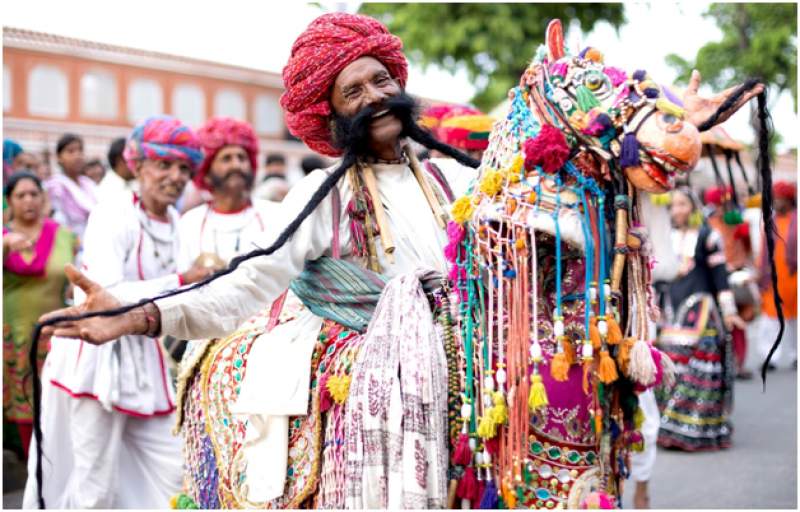
The culture of Rajasthan is deeply inspired and brought to life by the Indian dance styles. The dances of Rajasthan are hugely captivating. The most popular one is the 'Ghoomar' dance, originally performed by the 'Bhil community' for the kings. Other popular folk dances of Rajasthan are - 'The Chang dance' also called Dhammal Dance - performed during Holi by men, 'The Gair Dance' done by the 'Bhil Community' during Janmashtami, 'The Chari Dance' is done by the womens in Ajmer - is particularly captivating as they dance with brass pots on top of their heads with a burning lamps inside it. 'The Kachchhi Ghodi' is also a local dance form where men ride on puppet horses and perform the dance. Apart from this, the other dance forms are 'Kathputli (puppet dance shows)', 'Bhavai' and 'Kalbeliya'.
#11. Cuisine of Rajasthan
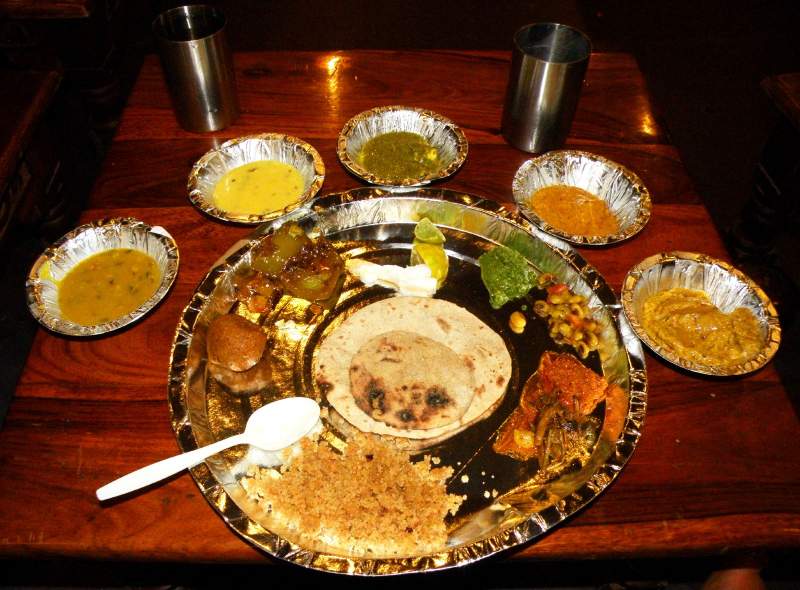
Rajasthan is a land of the desert. So, most of the Rajasthani Cuisine is evolved around it. In extreme dry conditions, where literally nothing grows, only Bajra or Pearl Millet are grown. They need less water for their growth, and hence, they flourish in the harsh climate of the desert. And from this Bajra is made Bati, and it is served with Dal or Rajasthani Panchmel Dal, which is made with Ker Sangri. It's extremely spicy and loaded with Clarifid Butter, but's that's for a reason. It helps in keeping their body calm and blood thin in the hot climates. The Bajra is also used to make Kheecdi, Rotis and Rabdis. Rajasthani Cuisine is mostly vegeterian. However, with the Mughal Influence, came in the culture of eating Meat. Specially, Hare or Rabit (Khargosh) is cooked and loved by all. Especially the Cuisine of Jaipur sees a lot of Mughal Influence, and that's how, Laal Maans which is the most popular dish of Rajasthan today, came into being.
Suggested read:
So, this was a brief history of the Culture of Rajasthan. This land of the Kings, is just amazing. From Castles to Forts, from Cultures to Traditions, from Shopping to Adventure, the Places to visit in Rajasthan or the Things to do when in Rajasthan, are just endless. Every body loves this state, and always plan a second trip. Hope you too love it. Until next time.
